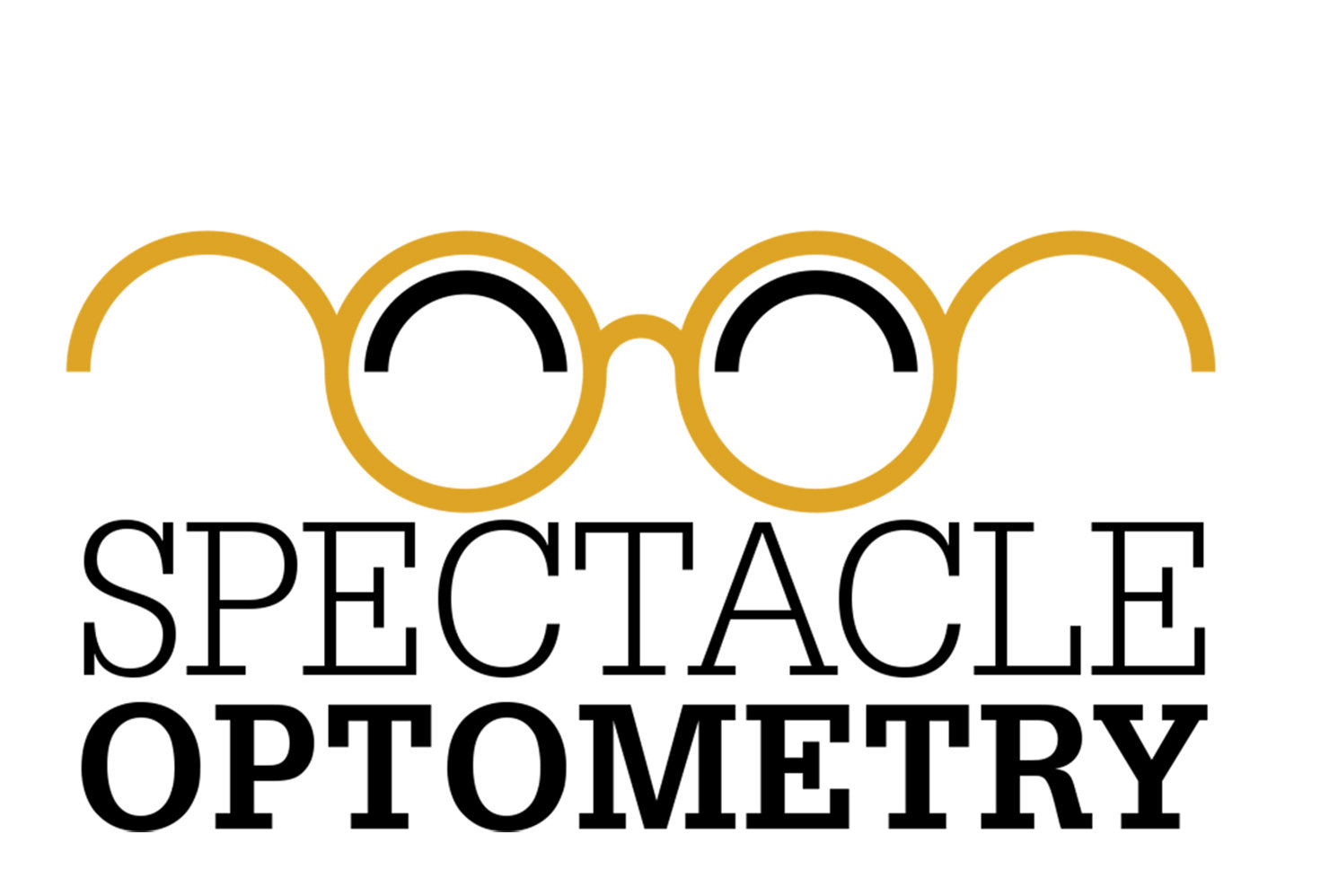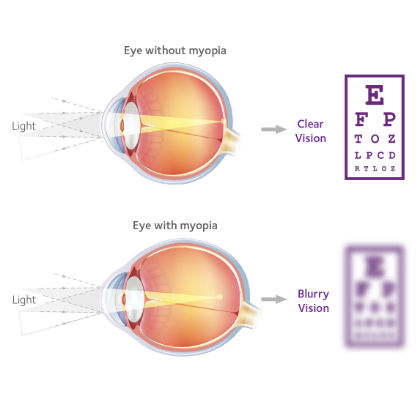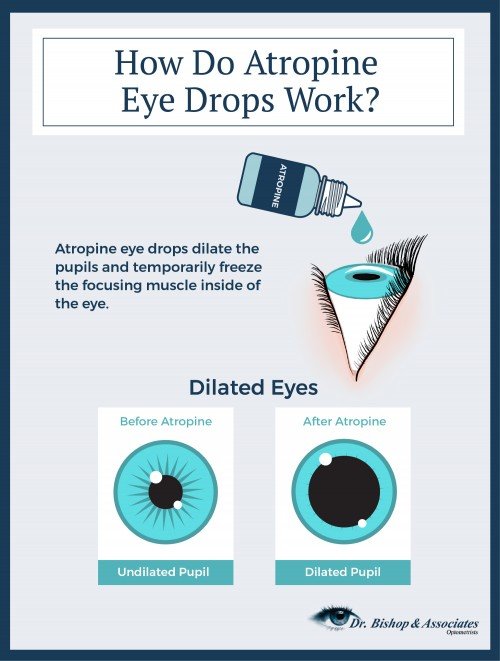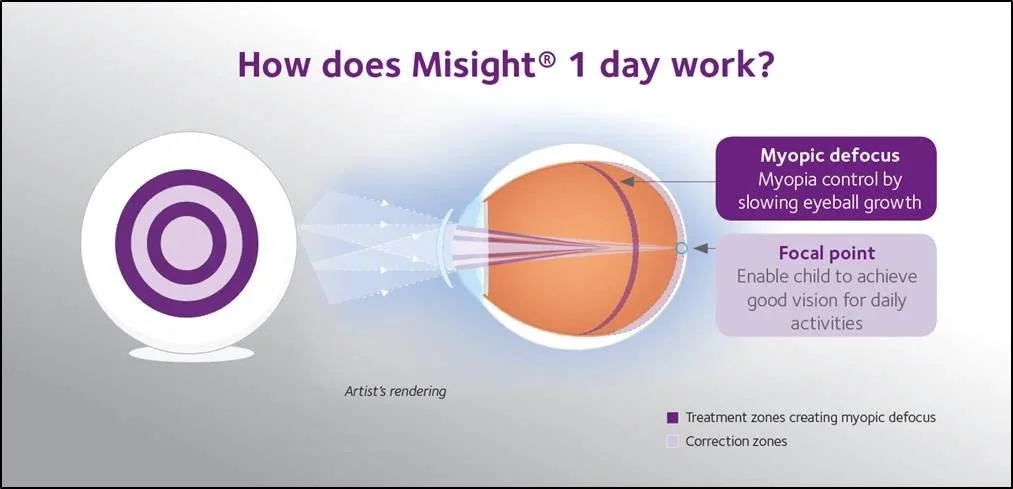MY OH MYOPIA!
Over the past few years, children have been exposed to more technology and near work than ever before. Less outside time and more screen time can actually be harmful for their little eyes. But what exactly does all this tech-time mean for our kids? What should we as parents be doing? Is there anything we can do? We’re here to answer all these questions and more for you!
By 2050, it is estimated that 58% of North America will be myopic. It is clear that myopia is on the rise, but what is that funny word and how does it relate to kids and technology? Myopia is more commonly referred to as nearsightedness, but there is a little more to it than that. Myopia occurs when your eyes become more elongated causing images to focus in front of the retina, rather than directly on the retina. Studies have shown that increased near work, especially on screens, can cause this elongation of the eye and nearsighted prescription in glasses. A little bit of nearsightedness is not a major problem, but when it starts early in kids, it can only progress as they go through growth spurts or increase that homework load. The biggest progressions in prescriptions are typically seen between the ages of 8-12. Those kiddos with parents who also have nearsighted prescriptions are even more likely to develop myopia and the struggles that can arise with this condition. Even those without any family history are about 25% more likely to develop myopia nowadays! Aside from the blurry vision in the distance, increased myopia can also put kids and adults at more risk for glaucoma, retinal detachments, and cataracts. Not to mention the inconvenience of only being able to see inches from your face without glasses or contacts. Eek!
So what can be done for children without any nearsighted correction yet to make sure they avoid myopic progressions? It’s actually quite simple… more time outdoors, taking breaks from screens and near work, and making sure they don’t hold material too close to their eyes. These are easy things we can do to ensure they have the best hope to avoid myopia and the conditions that can come from it. Also, remember your annual eye exams are your best way to see if their eyes are on track or if there are any changes that need to be more closely monitored.
If your child already has a nearsighted correction, don’t lose hope! There are plenty of treatment options aside from your typical glasses that we can do to avoid any astronomical progressions.
Atropine Drops
These drops have been around for awhile, but were not originally intended for myopia control. They dilate the pupil to stop the eye’s mechanism for focusing up close. By disabling the focusing for near tasks, the eye will not be able to do as much near work and it will reduce the eye fatigue that can cause myopic progression. It is often the first-line of treatment, the most mild and easy to implement, as well as cheapest, yet it does not always control myopia as much as we would like.
Orthokeratology
A relatively newer technology is orthokeratology (or OrthoK) hard contact lenses. These are hard contact lenses that children wear overnight to push on the cornea, essentially flattening the center of the cornea and displacing those cells to the peripheral edge of the cornea. This helps to redirect light rays on the retina, reducing myopic progression, and correcting the vision for the distance. Kids who do OrthoK lenses at night do not need glasses or contacts during the day. It stops the progression in it’s tracks. However, as soon as the OrthoK lenses are discontinued, the correction returns and possibility for progression resumes. It is great to stop the prescription, as long as the OrthoK lenses are utilized during the entirety of the peak myopic progression years.
MiSight 1-day Contacts
The newest myopia control technique is the MiSight 1-Day soft contact lenses. To the children in them, they are simply disposable soft contact lenses to correct the distance prescription throughout the day. However, they are so much more than that! Similar to a multifocal contact lens, there is an area of distance correction in the center and an area of defocus outside of that. This is also similar to the way atropine drops defocus for near. It is pretty remarkable how effective these contact lenses are as well! In studies, patients wearing MiSight lenses had at the most -0.25D of change each year compared to the average -1.00D that can occur in kids without myopia control techniques. On average, those wearing MiSight lenses only progress about -1.00D over the course of 6 years! The cool thing is that if you stop using these soft contacts, the distance correction will not revert back like in OrthoK lenses. We are excited to have this technology in our office and to be able to help so many children to slow the progression of myopia!
We want you to know that we are looking out for your children and will always be here to help, whether it is simply for their yearly exams or more frequently to monitor for myopia control. We want to bring you the newest technologies and best of the best for our patients. Myopia is unfortunately only going to continue to be around as technology is here to stay, but it doesn’t have to be out of control! Be sure to ask us at your next exam if you’re a good fit for any of these treatments or what would be the best course of action for your case or for your children. We are always happy to help!






